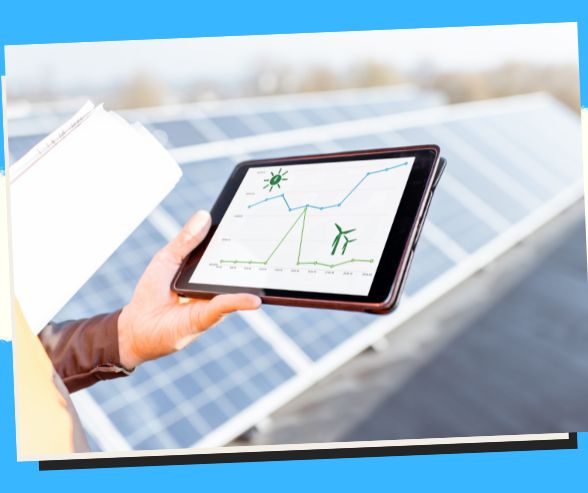
How Miniaturized Components are Driving the Future of Computing Power
Understand the importance of miniaturized components in increasing computing power and advancing tech capabilities.
The Vital Role of Miniaturization in Computing Power: How Small Advances Make a Big Impact
In the ever-evolving world of technology, miniaturization stands out as a game-changer. From our smartphones to sophisticated medical devices, the shrinking of electronic components has paved the way for groundbreaking innovations. But what makes miniaturization so crucial in computing power? Let’s dive into the details of this transformative process and explore how it’s shaping the future of technology.
What Is Miniaturization in Computing?
Miniaturization refers to the process of making electronic components smaller while enhancing their performance and efficiency. This concept has been pivotal in the evolution of computing power, enabling the development of compact yet powerful devices. As we continue to push the boundaries of size, the implications for technology are profound.
Historical Perspective: From Room-Sized Machines to Pocket-Sized Powerhouses
To appreciate the impact of miniaturization, it’s essential to understand the evolution of computing devices.
- Early Computers: The first computers, like the ENIAC (Electronic Numerical Integrator and Computer), occupied entire rooms. They were enormous, power-hungry, and slow by today’s standards.
- Transistors: The invention of the transistor in the late 1940s marked a significant breakthrough. Transistors replaced bulky vacuum tubes, allowing for smaller and more reliable machines.
- Integrated Circuits: The development of integrated circuits (ICs) in the 1950s further revolutionized computing. ICs combine multiple transistors into a single chip, drastically reducing size and cost.
- Modern Microprocessors: Today’s microprocessors pack billions of transistors into tiny chips, powering everything from smartphones to supercomputers. The relentless miniaturization of these chips has been crucial for the growth of technology.
How Miniaturization Boosts Computing Power
Miniaturization enhances computing power in several key ways:
- Increased Processing Power: By shrinking components, more transistors can be packed into a single chip, increasing processing power. This allows for faster and more efficient computing, which is essential for handling complex tasks and applications.
- Improved Energy Efficiency: Smaller components often consume less power, leading to more energy-efficient devices. This is crucial for portable electronics, where battery life is a significant concern.
- Enhanced Portability: Miniaturization enables the creation of compact, lightweight devices. This portability has transformed how we interact with technology, making powerful computing accessible on the go.
- Cost Reduction: Smaller components can be produced more cost-effectively, reducing the overall cost of devices. This has made advanced technology more affordable and accessible to a broader audience.
Practical Applications of Miniaturization
The benefits of miniaturization extend across various domains. Here are some notable examples:
- Smartphones: Modern smartphones are marvels of miniaturization. They combine powerful processors, high-resolution cameras, and large storage capacities into sleek, pocket-sized devices.
- Wearable Technology: Devices like smartwatches and fitness trackers rely on miniaturized components to deliver advanced features while remaining compact and comfortable.
- Medical Devices: Miniaturization has revolutionized medical technology, leading to the development of compact devices such as insulin pumps and pacemakers. These devices offer improved patient care and convenience.
- Internet of Things (IoT): The IoT ecosystem relies on small, efficient sensors and processors embedded in various objects, from home appliances to industrial machinery. This connectivity enhances functionality and automation.
Challenges and Future Directions
Despite its numerous benefits, miniaturization also presents challenges. As components become smaller, issues such as heat dissipation, electromagnetic interference, and fabrication complexity arise. Researchers are continually exploring innovative solutions to address these challenges:
- Advanced Materials: New materials, such as graphene and advanced semiconductors, are being investigated to overcome limitations in miniaturization and improve performance.
- Quantum Computing: Quantum computing promises to revolutionize computing by leveraging quantum bits (qubits) to perform complex calculations. Miniaturization is key to developing practical quantum computers.
- 3D Integration: Techniques such as 3D integration stack multiple layers of circuitry, allowing for even greater miniaturization and performance improvements.
- Neuromorphic Computing: Inspired by the human brain, neuromorphic computing aims to create more efficient and adaptable computing systems. Miniaturization plays a role in developing these advanced architectures.
Tips for Embracing Miniaturization in Your Technology Projects
If you’re working on technology projects or considering the impact of miniaturization on your work, here are some tips to keep in mind:
- Stay Updated: Technology evolves rapidly, and staying informed about the latest advancements in miniaturization will help you leverage new opportunities and innovations.
- Prioritize Efficiency: Focus on optimizing your designs for energy efficiency and performance. Smaller components can lead to significant gains in both areas.
- Collaborate with Experts: Work with specialists in materials science, electronics, and manufacturing to address challenges and explore new possibilities in miniaturization.
- Invest in Research: Support and invest in research and development to stay at the forefront of miniaturization technology and incorporate cutting-edge solutions into your projects.
- Consider Environmental Impact: Be mindful of the environmental impact of your technology. Look for sustainable practices and materials to minimize waste and promote eco-friendly innovations.
Benefits of Miniaturization in Computing Power
- Enhanced Portability
- Smaller components enable the creation of portable devices like laptops, tablets, and smartphones, revolutionizing how we work and communicate on the go.
- Increased Performance
- Miniaturization allows for the development of more powerful processors and memory chips, leading to faster and more efficient computing.
- Cost Efficiency
- Reduced component sizes and manufacturing processes often result in lower production costs, making advanced technology more accessible.
- Energy Efficiency
- Smaller, more efficient components consume less power, contributing to longer battery life and reduced energy consumption.
- Enhanced Connectivity
- Miniaturized components facilitate the integration of advanced connectivity features like 5G, enabling faster and more reliable communication.
- Innovative Applications
- The ability to fit powerful components into small devices opens up opportunities for new applications, from medical implants to smart wearables.
- Improved Reliability
- Smaller, more refined components often result in more reliable and durable devices, reducing the likelihood of mechanical failure.
- Advanced Computing Capabilities
- Miniaturized components contribute to the development of advanced computing technologies such as artificial intelligence and machine learning.
- Reduced Environmental Impact
- Smaller devices generally require fewer resources and generate less electronic waste, supporting sustainable technology practices.
- Greater Design Flexibility
- Miniaturization allows for more creative and versatile designs, enabling the creation of innovative and aesthetically pleasing devices.
Case Studies
- Intel’s Microprocessors
- Intel’s development of smaller microprocessors has led to significant performance gains and power reductions, shaping modern computing.
- Apple’s iPhone Evolution
- The iPhone’s transition from a bulky device to a sleek, powerful smartphone showcases how miniaturization enhances user experience and functionality.
- Wearable Technology by Fitbit
- Fitbit’s miniaturized sensors enable real-time health monitoring in compact wearables, illustrating the benefits of small, efficient components.
- Medical Implants
- Miniaturized medical implants, such as pacemakers and glucose monitors, improve patient outcomes by offering advanced monitoring and treatment options.
- Quantum Computers
- Companies like IBM and Google are working on miniaturizing quantum computing components to tackle complex problems previously beyond reach.
- Nano-Drones
- Miniaturized drones used for surveillance and research highlight the potential of small, powerful devices in diverse applications.
- Raspberry Pi
- The Raspberry Pi’s compact size and affordability have democratized access to computing power, fostering innovation in education and hobbyist projects.
- Solid-State Drives (SSDs)
- SSDs, with their smaller form factor compared to traditional hard drives, offer faster data access speeds and improved reliability.
- Miniaturized Sensors in IoT Devices
- Internet of Things (IoT) devices leverage miniaturized sensors to collect and transmit data, enabling smarter homes and cities.
- Wearable Cameras
- Miniaturized cameras in wearable devices, like GoPro, allow users to capture high-quality footage in compact, rugged formats.
Key Takeaways
- Miniaturization Drives Innovation
- Smaller components lead to innovative technologies and applications, enhancing our daily lives and expanding possibilities.
- Performance and Efficiency
- Shrinking components often translate to better performance and energy efficiency, making devices faster and more sustainable.
- Portability Enhances Usability
- Compact devices are easier to carry and use, providing flexibility and convenience in various scenarios.
- Cost and Environmental Benefits
- Miniaturization can reduce production costs and environmental impact, promoting sustainable technological advancement.
- Design Freedom
- Smaller components offer greater design flexibility, enabling more creative and versatile device solutions.
- Health and Safety
- In medical applications, miniaturized devices improve patient care by offering advanced monitoring and treatment options.
- Advancements in Computing
- Miniaturization fuels the progress of powerful computing technologies, including artificial intelligence and quantum computing.
- Enhanced Connectivity
- Smaller, more efficient components support advanced connectivity features, driving the development of faster, more reliable networks.
- Reliability and Durability
- Smaller components often lead to more reliable and durable devices, reducing maintenance needs and extending product lifespans.
- Accessibility and Education
- Affordable, miniaturized computing devices democratize access to technology, supporting education and innovation.
FAQs
Q1: How does miniaturization impact device performance?
A1: Miniaturization often improves device performance by allowing for more powerful components in smaller spaces, leading to faster and more efficient operations.
Q2: What are the environmental benefits of miniaturization?
A2: Miniaturization can reduce electronic waste and resource consumption by enabling smaller devices that require fewer materials and generate less waste.
Q3: How does miniaturization affect battery life?
A3: Miniaturized components are typically more energy-efficient, which can contribute to longer battery life in portable devices.
Q4: What are some examples of miniaturized technology in medical applications?
A4: Examples include miniaturized pacemakers, glucose monitors, and wearable health trackers, which provide advanced monitoring and treatment options in a compact form.
Q5: How does miniaturization benefit consumer electronics?
A5: It enhances portability, performance, and design flexibility, leading to more powerful, efficient, and user-friendly devices.
Q6: What role does miniaturization play in the development of quantum computing?
A6: Miniaturization of quantum computing components is crucial for creating practical and scalable quantum computers capable of solving complex problems.
Q7: How has miniaturization impacted the gaming industry?
A7: It has led to the development of more powerful and compact gaming consoles and portable gaming devices, providing enhanced gaming experiences.
Q8: Can miniaturization contribute to sustainability?
A8: Yes, by reducing the size and material needs of devices, miniaturization supports more sustainable technology practices and reduces environmental impact.
Q9: What are the challenges associated with miniaturization?
A9: Challenges include maintaining reliability and performance at smaller scales, managing heat dissipation, and addressing manufacturing complexities.
Q10: How does miniaturization influence future technological advancements?
A10: Miniaturization is likely to continue driving innovation, enabling the development of new technologies and applications that were previously inconceivable.
Conclusion
Miniaturization has played a pivotal role in the advancement of computing power, transforming the way we interact with technology and enhancing our daily lives. From the early days of bulky machines to today’s compact yet powerful devices, the journey of miniaturization has been nothing short of remarkable. As we continue to push the boundaries of what’s possible, the impact of miniaturization will only grow, driving innovation and shaping the future of technology.
Embrace the power of miniaturization in your projects, stay informed about the latest advancements, and continue to explore new possibilities. The future of technology is small but mighty, and the potential is boundless!
Key Phrases
- Miniaturization in computing power
- Impact of miniaturized tech
- Advancements through miniaturization
- Small components, powerful computing
- Future of miniaturized technology
- Boosting computing efficiency
- Tiny tech innovations
- Revolutionary miniaturization
- Computing power enhancements
- Next-gen miniaturization benefits
Best Hashtags
- #Miniaturization
- #ComputingPower
- #TechInnovation
- #FutureTech
- #TechAdvancements
- #SmallTechBigImpact
- #EfficientComputing
- #NextGenTech
- #TinyTechRevolution
- #PowerfulMiniaturization
Save/Share this story with QR CODE
Disclaimer
This article is for informational purposes only and does not constitute endorsement of any specific technologies or methodologies and financial advice or endorsement of any specific products or services.
 Need to get in touch?
Need to get in touch?

We appreciate your reading. 
1.) 

Your DONATION will be used to fund and maintain NEXTGENDAY.com
Subscribers in the Philippines can make donations to mobile number 0917 906 3081, thru GCash.
3.) 
4.) 
AFFILIATE PARTNERS

World Class Nutritional Supplements - Buy Highest Quality Products, Purest Most Healthy Ingredients, Direct to your Door! Up to 90% OFF.
Join LiveGood Today - A company created to satisfy the world's most demanding leaders and entrepreneurs, with the best compensation plan today.

 Business, Finance & Technology
Business, Finance & Technology













































